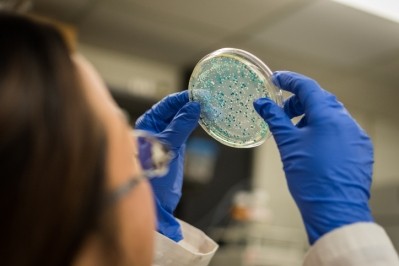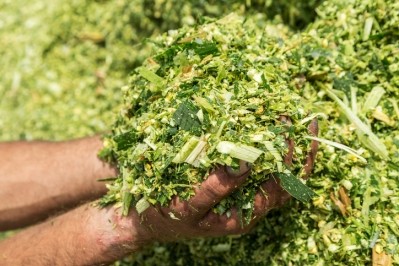Australia: Swine body frustrated over lack of feed research pitches

However, it is set to take remedial action.
APRIL’s first call attracted more than 40 submissions. The organization’s research and development committee met on March 26 to consider the 33 proposals that had passed through the review process. The Institute chose to back 14 proposals.
The organization said all the successful projects included a 20% to 25% cash contribution from applicants, giving a total cash budget for the first round of approximately AUD $1.2m.
Among those backed were ones on reducing antimicrobial resistance and better understanding of the gut microbiome in animal health and performance, plus a couple on novel diagnostics and remote monitoring pig health.
In terms of feed, APRIL interim CEO, Roger Campbell, said: “We have one proposal looking at reducing ingredient costs through protection of crucial and expensive vitamins. The vitamins are coated with a starch/fat matrix, which in poultry has enabled levels to be reduced by 30%. We are also supporting a project on use of protease, which has been demonstrated to improve performance in poultry. It will be investigated in weaner and grower pigs.”
When asked why he thought there were so few proposals on feed efficiency or feed cost reduction under the first call, he told FeedNavigator:
“Improving the inherent feed efficiency of pigs is challenging and there has been few breakthroughs in past 10 years, but new science and new approaches are needed.
“We have the capable scientists, but many are currently involved concluding other projects for Pork CRC and/or are otherwise occupied. For example, Pork CRC has two significant and active major projects (Projects 4B-122 and 4B-123) on how grain particle size and dietary fiber affect enzyme diffusion rates, digestion and feed intake. Both are managed by Professor Mike Gidley at the University of Queensland, and they feature some of the most mechanistic research in the area in a decade. I am optimistic the outcomes, when the projects conclude, will contribute to better utilization of grain and feed by grower-finisher pigs.”
The APRIL board and management said it wants to address that feed data gap in the shorter term via another call for innovation proposals. In the longer term, it hopes to initiate discussions on feed cost reduction and efficacy projects with the relevant researchers and research groups.
It said its expects a second call for innovation proposals in the area will generate interest and bring some proof of concept ideas/proposals forward.
APRIL said it is seeking ideas on, but not limited to:
- Enhancing our capacity to utilise grain alternatives including milling co-products and pulses.
- Maintaining development of NIR calibrations for DE and available lysine in cereals and oilseeds, respectively.
- Developing effective means of measuring feed intake and wastage in pigs through all production phases.
- Enhancing methods for recovery of waste phosphorus and other high-demand nutrients.
- Improving application of enzyme and other feed additive technologies to conserve nutrients.
- Developing nutrient profiling and feeding practices of alternative or novel feed sources
In terms of how April will move to engage with researchers on feed related matters, Campbell said:
“APRIL has established a think tank group to search for and discuss options in the area. We will also visit relevant research organisations and researchers to encourage innovation and proposals in the area.”
APRIL, which replaces the Cooperative Research Centre for High Integrity Australian Pork (Pork CRC), reported a budget of around AUD $3m for 2018-2019. The Australian government’s agreement with the Pork CRC ends in June next year.
APRIL’s inaugural education committee comprises: Professor Frank Dunshea (Chair), University of Melbourne, Professor John Pluske, Murdoch University, Dr Eugeni Roura, University of Queensland, Dr Darryl D’Souza, SunPork, Dr Rob Smits, Rivalea, Heather Channon, APL and Dr Charles Rikard-Bell, Pork CRC.
Pig feed efficiency: Australia v rest of the world
We reported on a Pork CRC global benchmarking project in January this year. That found that the Netherlands leads the world on pig feed efficiency, reporting a herd feed conversion (HFC - total feed divided by total carcass weight produced) of 3.4 for 2016. The UK was the worst performer, with most other countries running fairly close together.
The average HFC for Australia was 3.73 against the CRC’s target of 3.4.
“Australia was competitive with the US, Canada and Denmark and better than the UK, with the Netherlands leading the pack,” Dr Roger Campbell told FeedNavigator back then.
Involving some 23 herds and 80,000 sows, the benchmarking project compares the performance of participants in key areas.
“Participants compare how each is doing and who made the greatest improvements over the 12 months and over a longer period of time. They openly discuss how they made the progress they did. We also use the results to compare where the Australian industry sits globally,” explained Dr Campbell.
He said that Australian pork producers were competitive for feed efficiency, but that it was a key performance indicator that had “unfortunately” remained static for some time and was “well below the capability of available genetics”.
For example, the average feed: gain between weaning and sale (100kg) for Australian producers in the project was 2.4 (on a live weight basis), against a target of 2.0.
However, he cited research results that have shown that the feed: gain of pigs between 38 and 100kg is only 3.8 for females. The latter equates to a feed: gain between weaning and sale of closer to 2.0 than 2.4 and to an HFC close to the target of 3.4, said Dr Campbell.
Bridging the gap
Explaining the disparity between research results and commercial reality, he said: “Our genetics are excellent and very efficient but this efficiency is not being achieved commercially. The reason is probably multi-faceted and includes feed wastage, clinical and sub clinical disease, activation of the immune system, overstocking for short periods as pigs approach sale weight and pigs being below and - to a lesser extent - above their thermoneutral zones.”
The best herds in the benchmarking project reported feed: gains between weaning and sale of 2.0 and HFC values closer to 3.4 than 3.7, which Dr Campbell said “can be done”.
He suggested that improving feed efficiency was “probably largely a matter of fully understanding the importance of HFC in determining profitability, setting a target for all involved and paying more attention to detail”.
This article was modified on Wednesday May 9 to include the comments on the lack of feed proposals from APRIL interim CEO, Roger Campbell.








